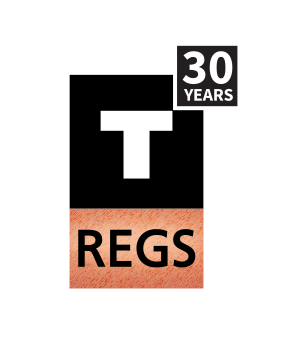
As was indicated in a previous T-REGS news item, the Italian regulatory authority AGCOM has published delibera n. 465/04/CONS, which is its formal public consultation document on Market 16: “voice call termination on individual mobile networks”.
This follow-up news item focuses specifically on the selection of remedies (regulatory obligations) proposed to be imposed on operators that are deemed to have Significant Market Power.
AGCOM puts forward that all 4 active mobile networks operators on the Italian market (TIM, Vodafone, WIND and H3G) have Significant Market Power, i.e. they are deemed to be individually dominant on the market for the supply of wholesale mobile voice call termination on their own networks.
However, the regulatory obligations suggested by AGCOM are not identical for the 4 mobile network operators, specifically as regards the obligation of cost-orientation, for which AGCOM puts forward different obligations for TIM and Vodafone on the one hand, and WIND on the other hand, whilst it proposes to forebear from imposing cost-orientation on H3G for the time being.
This news item also addresses the other proposed regulatory obligations, which, as AGCOM suggests, would be applicable to all mobile network operators.
Obligation of non-discrimination
In paragraphs 164-170 of its consultation document, AGCOM proposes to impose obligations of non-discrimination (on the wholesale voice call termination market) on all 4 mobile network operators, and AGCOM specifies that these obligations would apply not only vis-à-vis third parties but also with regard to the internal divisions and associated companies of the mobile network operators, including as regards fixed-to-mobile calls for the same/associated companies operating under different authorisations.
AGCOM proposes to interpret the principle of non-discrimination, in paragraph 167, as meaning that it does not prohibit offering discounts that are justified by economies of scale derived from the acquisition of significant volumes of traffic, with reference to the fixed costs that can be avoided by the mobile network operator in conducting the sale, for example the fixed interconnection costs or billing/invoicing costs, insofar as the mobile network operator guarantees that it will provide identical conditions to all purchasers acquiring the same traffic volumes. AGCOM is explicitly soliciting input from interested parties on this proposal.
In addition, AGCOM proposes to require mobile network operators to notify interconnection agreements to it, and to publish, and modify where appropriate, reference interconnection offers. Paragraph 169 outlines the proposed minimum contents of a reference interconnection offer (with pre-publication of modifications of economic conditions 45 days in advance, and technical conditions 90 days in advance).
Obligation of access and use of network elements
In paragraphs 171-172, AGCOM proposes to impose access obligations on all 4 mobile network operators. These include traditional interconnection requirements, but also co-location, the choice for the interconnecting party to use customer-sited, its own or third party interconnection links, as well as mandatory access to OSS systems.
Obligation of price (wholesale charge) control and cost-accounting
In paragraphs 172-199, and with reference to detailed annexes, AGCOM proposes to maintain/continue existing cost-orientation obligations for TIM and Vodafone, although with an immediate transition to a Long-Run Incremental Cost (LRIC) Model, to impose a new cost-orientation obligation on WIND, characterised by ‘delayed reciprocity’, and to leave H3G’s wholesale mobile voice call termination charges unregulated for the period of this market review, i.e. for the period 2005-2007.
AGCOM states very explicitly that imposing stringent cost-orientation on H3G (and to some extent on WIND) could result in excessive obligations, which could entail the risk of preventing it/them from developing its/their network(s) and customer base(s), and the consolidation of its/their financial positions. Imposing such obligations, may, according to AGCOM, compromise the development of these operators, and, on a forward-looking basis, reduce the number of operators in the market, which would ultimately harm the consumer interest.
In summary, AGCOM’s proposal is to:
a) Reduce TIM’s and Vodafone’s wholesale voice call termination charges to an average (peak/off-peak) of 8,7 eurocents/min by mid-2007, by applying a modified ‘network-cap’. This amounts to a reduction of RPI-15%, to be applied in the middle of every year 2005, 2006 and 2007, starting with a reduction from the currently applicable 14,5 eurocents/min to 12,6 eurocents/min on 1 June 2005. AGCOM stresses that the exact figures can be modified, based upon detailed analysis of various parameters including the cost-accounting data of the operators, the weighted average cost of capital (which is currently set at 18% but is proposed to be adjusted), and the evolution of the retail price index (RPI).
b) Apply “delayed reciprocity” for WIND (in accordance with the ERG Common Position on Regulatory Remedies, and taking into account the fact that WIND relies more on 1800 MHz frequencies than TIM and Vodafone do, especially in urban areas, resulting in more base station locations and hence higher costs), and to have a glide-path starting at 14,5 eurocents/min on 1 June 2005, but which is to converge with TIM’s and Vodafone’s imposition of 8,7 eurocents/min by mid-2007. This amounts to a reduction of RPI-26%, to be applied at the middle of every year 2005, 2006, 2007.
c) Forebear from imposing cost-orientation on H3G for the period 2005-2007.
More generally, AGCOM proposes to allow mobile network operators to define their own wholesale voice call termination tariff gradient, i.e. each operator could choose to define one single wholesale call termination charge independent of the time of day, or apply peak/off-peak and other gradients, insofar as they meet the overall cost-orientation obligation over a 1-year period.
